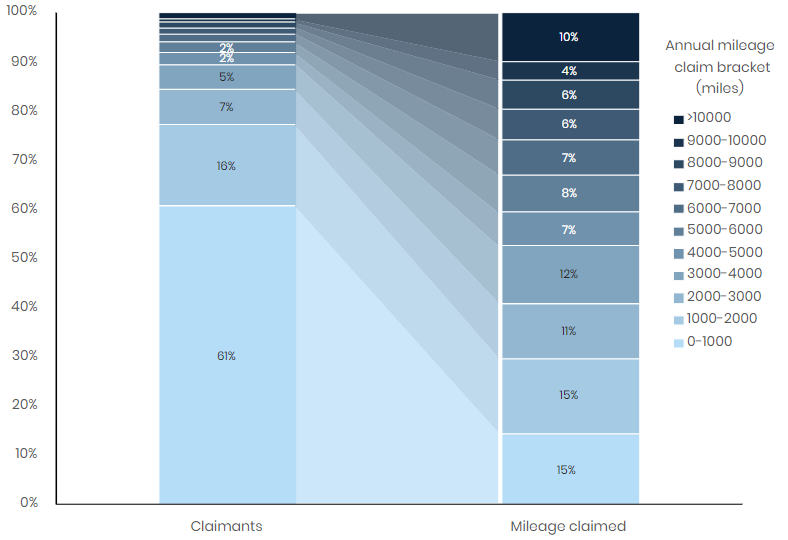4.3. Grey fleet
Explore a typical grey fleet and discover how grey fleet reliance can be reduced by shifting journeys up the sustainable transport hierarchy to shared car use or public transport.
A typical grey fleet
In a typical grey fleet, a small number of drivers usually claim a high proportion of the total miles driven.
The example grey fleet in Figure 16 shows 2,506 claimants covering just over 3,800,000 miles annually. Although this is an average of only 1,540 miles per claimant, the mileage is unevenly distributed in most grey fleets. This is outlined in the graph below, which shows that a large proportion of grey fleet drivers (61%) are claiming relatively few miles (0-1000 per year). This group contributes only 15% of the total miles claimed.
At the other end of the scale, only 1.2% of the drivers are claiming almost 10% of the total miles. Each of these drivers is claiming more than 10,000 miles annually. This pattern of driver behaviour is typical of most grey fleets. In this example, the grey fleet driver claim for the 1,540 average annual mileage would be £693*. However, the highest mileage claimant, claiming over 17,000 miles, would receive up to £7,732* annually.
*assuming a reimbursement rate of 45p per mile
Using the average emissions for all cars on the road in 2021 (171.48gCO2e/km) (DBEIS, 2021), the CO2e emissions from this grey fleet would be 473 tonnes of CO2e.
You can reduce grey fleet reliance in your organisation by shifting journeys up the sustainable transport hierarchy to shared car use or public transport. Organisations that focus interventions on the highest mileage claimants may see significant cost savings and reductions in CO2e emissions. These cost savings could be ring-fenced for fleet decarbonisation projects.
